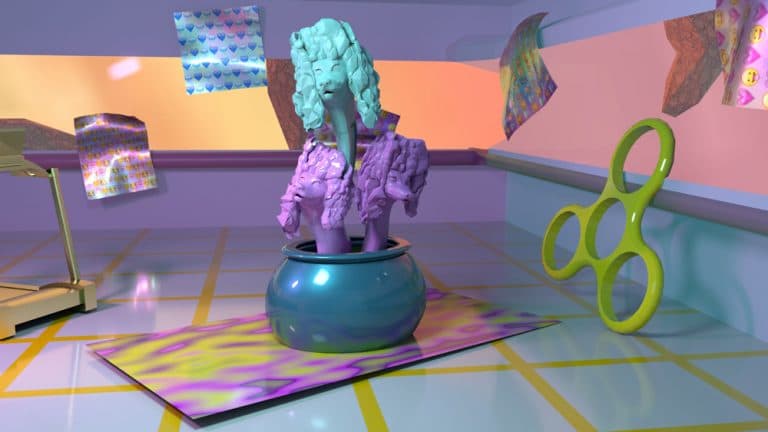TikTok collectives are moving into ‘collab houses’ to create better content
Los Angeles has always been known as the city people go to to ‘make it’ big in the entertainment industry. Now, thanks to TikTok, it is also a thriving hotspot for gen Z TikTok creators, where teenagers come to join together and collaborate on new content creation.
Hype House, reportedly home to 19 members, is a gated mansion located in Los Angeles. It is also a TikTok collective in which gen Zers collaborate with each other in order to make new TikToks all day, every day and have acquired over 6.2 million followers already. Formed in December, its founders, Chase Hudson and Thomas Petrou, saw this as an opportunity to bring rising TikTok stars together and help each other grow on the platform.
Only 4 members actually live in the mansion permanently, with others keeping rooms to crash in when in town, as many are still teenagers and in school. Some of the members are as young as fifteen, with the oldest one, co-founder Petrou being only twenty-one. Essentially, it is a house full of unsupervised teenagers where Petrou is considered the ‘mother of the house’—but the house has strict rules. Members assure that this is not a party house and Petrou tells the New York Times that it is “designed for productivity.” They make a minimum of a hundred TikTok videos a day, and in order to stay or even be invited to the house, you have got to work hard.
Content creator ‘collab houses’ are not a new concept and were already popular during the previous decade, especially with YouTubers. But what makes Hype House different is that it is not just a collab house; it is a collective, and, above all, a community. The founders of the house do not take a cut of anyone’s revenue, and they are aware of how ephemeral internet fame can be—they want to make a difference and support each other.
However, my aim is not to describe the community as perfect. The collective has previously been questioned for its lack of diversity. Hype House is also not the only collaborative TikTok collective—but it is the most famous as of yet.
Tomisin Adeleye, perhaps better known by his TikTok handle @uncle.tomm recently went viral after posting this TikTok as a response to Hype House. He works closely with another well-known collective, Diversity University, and sees TikTok as a new platform that gives everyone a voice. “As an individual, I will never come for someone for not representing diversity because I can’t make anybody do anything against their will, but I can do my part in creating a more diverse representation,” he tells Screen Shot. “What is the best message that we can spread? TikTok is not the most positive place, but of course, no platform can be perfect.”
While Melanin Mansion has been put on hold, Diversity University is an emerging project coming quickly to life. It does not have a house as of yet, but it has the community. “We have people of all ethnicities, from diverse backgrounds. A lot of people speak many different languages, and post different kinds of content,” explains Adeleye. Forming this collective has taken a lengthy audition process, as Diversity University tried to pick up creators of various sizes before meeting in LA in March to work on group content.
“It is important to have diversity in such a group so that young people on TikTok have someone who looks like them and have similar experiences to look up to,” Cabin Six tells Screen Shot. Cabin Six is an emerging, fast-growing LGBT TikTok collective with over 34k followers on the app and whose main purpose is to promote LGBT representation on TikTok. “We aim to make relatable content for LGBT people in order to create an inclusive and friendly community amidst the widespread toxicity on TikTok.” At the moment, each member of Cabin Six creates their content remotely, and while they are not looking to move into a collab house for various safety and financial reasons, they do hope to meet in real life and work on producing group content.
Finding and moving into a house can be very tricky so imagine doing the same in Los Angeles when you’re only 15. While the value of the Hype House mansion is undisclosed, each room, reportedly, is rented out for an estimate of $900 per month, which, if you count all 19 members would add up to $17,100 per month—getting a lease for this amount is difficult for most people, especially for young people without a secure income. While renting out an Airbnb or any other short term accommodation would be a more feasible option, many Airbnbs in Los Angeles have a strict non-filming policy.
That is, of course, not to undermine the hard work of those in the Hype House or the message they are trying to spread. Both Cabin Six and Adeleye explain that they think the Hype House is a great concept, and hope to see representation and inclusivity increase as the collective grows. “A lot of people are putting us against them, and we’re trying to make it clear that we are not hating on them at all: we’re just two separate visions. We are all here to spread positivity.” And if there is one thing you can trust the new gen to do, is change the world through TikToks.





